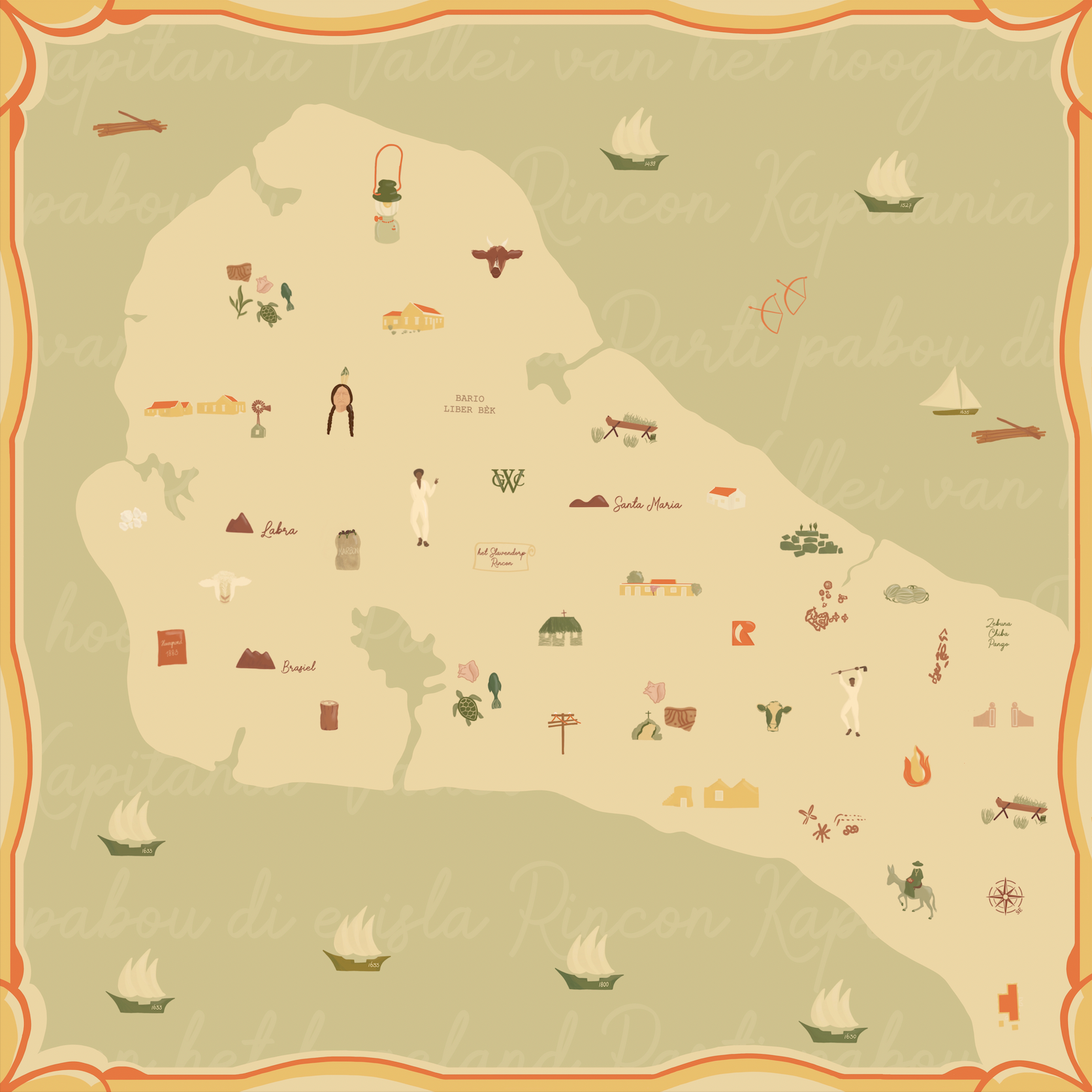The true definition of an island bag!
All of Bonaire's beaches in a row, with their original names. The names they had before influence from abroad, names created mostly by our fishermen. Our fishermen named the beaches literally after what they saw and could use as landmarks to orientate.
For example at Angel City there used to be a 'Pal'i Sia' (scientific name: Bursera simaruba tree), so the beach was named 'Pal'i Sia'.
This tote bag is made from organic cotton. The color is natural. Size of the bags is W 50cm x H 35cm x D 15cm. The handle is from a sturdy material with a handle length of 35cm with a width of 6.5cm which sits comfortably on your shoulder. No matter the weight of the bag.
Machine washable.
Designed with much love from Bonaire to the world!
Don't forget to tag us!
_________
Origin of the beach names
- Kabayé [Pink Beach] - unknown
- Pal'i Sia [Angel City] - there used to be a Pal'i Sia (scientific name: Bursera Simaruba tree) at this beach. 'Pal'i' is short for 'Palu di' which means 'Tree of'.
- Fòrn'i Kalki [Bachelor's Beach] - there used to be a limestone factory on the rugged coast of Punt Vierkant, where Bachelor's Beach now is. Fòrnu means Oven and Kalki means Limestone; Limestone oven.
- Pal'i Mangel [Donkey Beach] - we call Mangrove trees 'Pal'i Mangel' which actually means 'Candy Tree'. The beach had a lot of these trees, but after a while there was more donkey's than trees. Hence the name change.
- Te Amo is a fairly new beach of the last decade. One day we all woke up to a graffiti saying 'Te Amo' which means 'I Love You' in Spanish. And that simply became the name of this beach.
- Pal'i Lechi [Malekon; the boulevard] - Pal'i Lechi stands for Tree of Milk...you know those type of trees when you break it off a milk-like fluid runs from it? Well there used to be a lot of those trees on the boulevard, hence the name.
You might also hear some elders calling the area at the beginning of the boulevard 'Play'i Sarna'. Playa means Beach and Sarna are Thicks. The residents of this area were light-skinned with lots of freckles. Someone thought that the freckles looked like thicks...and they called the beach Play'i Sarna.
- Pal'i Koko [Andrea] - there used to be a single palm tree at Andrea, the fishermen then simply named the spot Coconot Tree.
- Barcadera [1000 steps] - Barca/barka means 'to ship' and this area is where coal, goats, pal'i sia etc were exported back in the days.
All the beaches at the northern side of the island, part of Washington Slagbaai, still hold their original names. We are greatfull that the organization didn't change the beach names.
- Playa Maurice Neme [No Name Beach / Klein Bonaire] - in the mid 1900's Maurice Neme was owner of Klein Bonaire. The father of Maurice Neme was the first person to build a hotel on Aruba. This family was very active in developing of the islands for tourists. The also had a big plans to develop Belnem but the plan fell through. The last 3 letters of Belnem are derived from Neme. Later the government has bought Klein Bonaire back from the Neme family.

Gotomeer (1)
Gruta di Lourdes (2)
Pos Bronswinkel (3)
Kaumati (4)
Onima (Inskripshon Spiritual di Indjan) (5)
Inskripshon Spiritual na Fòntein (6)
Pintura di Indjan na Karpata (7)
Amerigo Vespucci ta jega Boneiru (8)
Posiblemente Pader Fernandez a soru pa por haña mas tantu Indjan bèk i laga nan liber pa nan regresa Boneiru. No tin prueba si alfinal nan a regresa.
Hispañola i bèk Boneiru (9)
Kapitanía (10)
Eksportashon di palu (11)
100.000 kueru di karné (12)
Enkuentro Spaño vs Hulandes (13)
Kandela (14)
Karpata (15)
Porta Spañó (16)
Pirata Hulandes i Franses (17)
Arku i Flecha (18)
E Hulandes nan a huza Korsou komo nan sentro di komersio i e Spaño nan kier a mantene Boneiru pa meskos.


